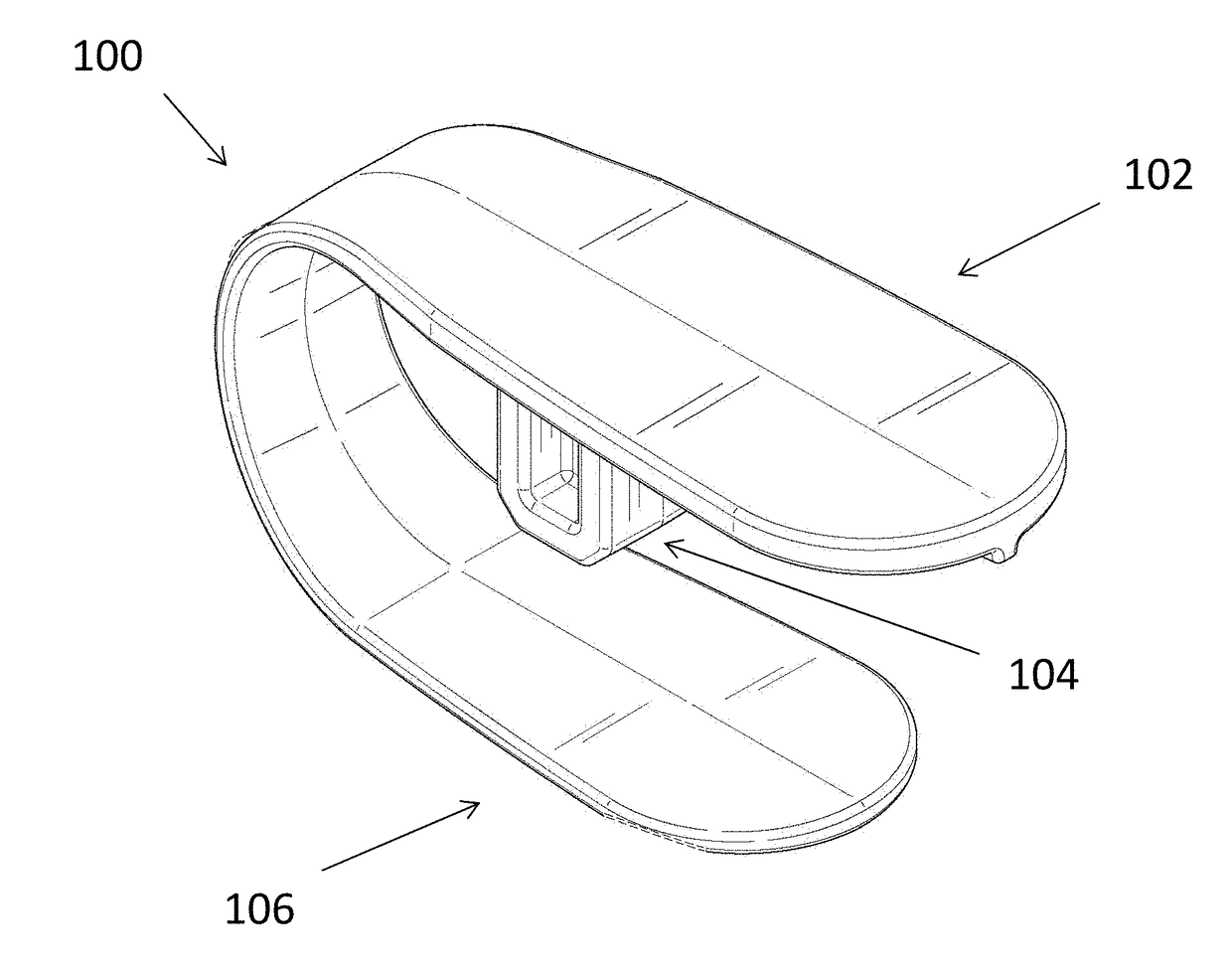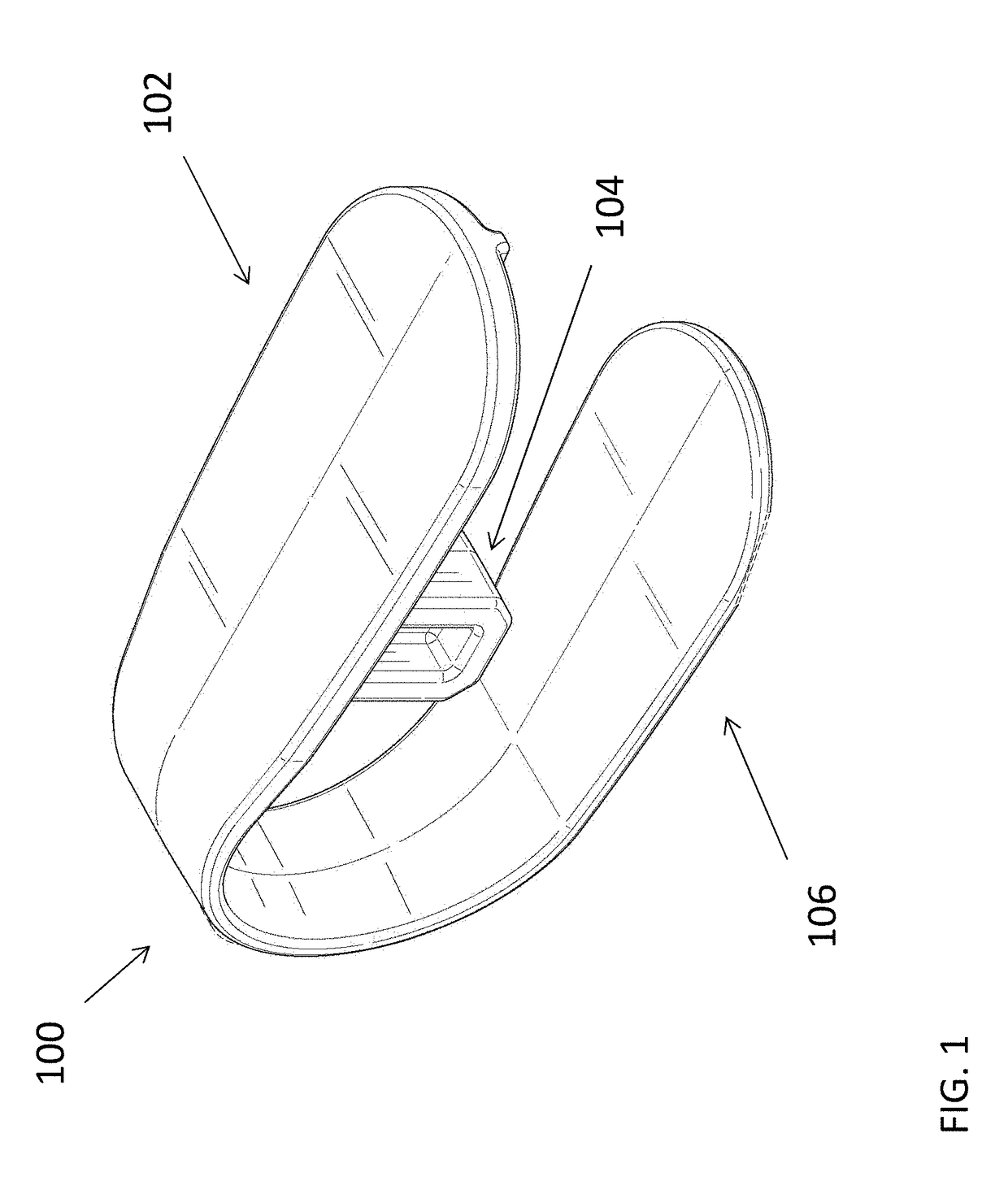System and method for buckle release assistive device
a technology of assistive devices and buckles, which is applied in the field of system and method of buckle release assistive devices, can solve the problems of lack of thumb or finger strength, inability to unlatch the buckle of the child restraint seat, and posing risks to child safety, so as to reduce the pressure required and avoid the dependency on the fingers for gripping
- Summary
- Abstract
- Description
- Claims
- Application Information
AI Technical Summary
Benefits of technology
Problems solved by technology
Method used
Image
Examples
Embodiment Construction
[0022]FIG. 1 is a perspective view of an embodiment of a buckle release assembly 100. In this embodiment, the buckle release assembly 100 has a generally C-shaped body having an upper portion that forms a handle 102, a lower portion that forms a back 106, and a generally curved middle section between the upper and lower portions. While the embodiment shown has a generally curved middle section, in various embodiments, the middle section may include one or more angles or a combination of angles and curves. In the embodiment shown, the handle 102 has an actuator 104 protruding from an inner surface and a generally flat outer surface. In various embodiments, the outer surface of the handle 102 positioned at the top of the C-shaped body may include one or more grooves, may be textured, may be coated in a non-skip material, or may include one or more protrusions therefrom to further facilitate depression of the actuator. In other embodiments, the handle 102 may additionally include a sof...
PUM
 Login to View More
Login to View More Abstract
Description
Claims
Application Information
 Login to View More
Login to View More - R&D
- Intellectual Property
- Life Sciences
- Materials
- Tech Scout
- Unparalleled Data Quality
- Higher Quality Content
- 60% Fewer Hallucinations
Browse by: Latest US Patents, China's latest patents, Technical Efficacy Thesaurus, Application Domain, Technology Topic, Popular Technical Reports.
© 2025 PatSnap. All rights reserved.Legal|Privacy policy|Modern Slavery Act Transparency Statement|Sitemap|About US| Contact US: help@patsnap.com



